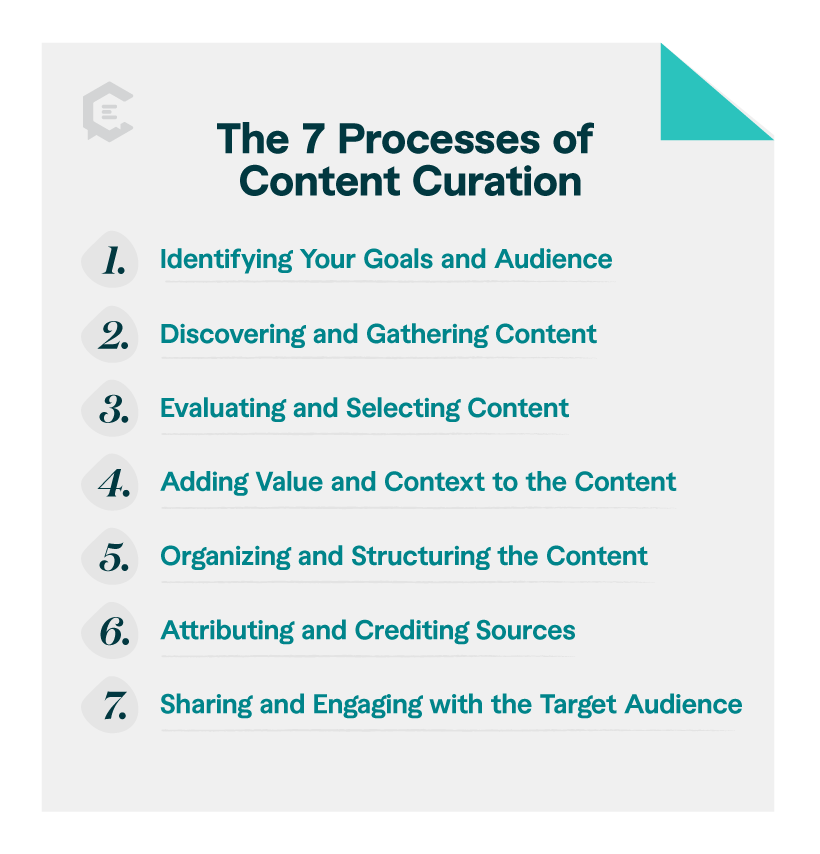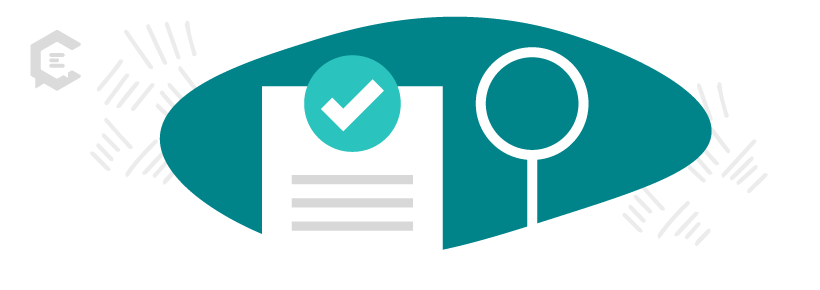Have you ever walked into a museum exhibit and thought, “Wow, this is totally my style”? Chances are, a curator had someone like you in mind while they painstakingly chose every work of art. Content curation can have the same effect — and with revenue-boosting results. Here’s a breakdown of the art of content curation, how to do it, examples, and benefits.
What Is Content Curation?
Content curation refers to the process of identifying, organizing, and presenting content from a range of sources for a particular audience. The process begins with finding the most applicable content for potential and existing customers. Then a content curator presents each piece in a way that enhances the experiences of a particular target audience by:

- Answering pertinent questions
- Solving a core business problem
- Providing a well-rounded educational experience around a topic
In your content marketing strategy, it can be effective to use both curated and created content. Each comes with its own set of benefits.
What are some examples of content curation?
Content curation can take many shapes and sizes, but in every instance, it involves choosing and presenting content to match the needs of a certain audience. Here are some examples:
- Social media curation: Imagine a social media manager for a personal finance company. They curate insightful financial tips, relevant news updates, and inspiring success stories about smart money management. They source this content from various finance bloggers, economists, and industry influencers. The curator then shares these curated posts on the company’s social media channels, which helps to boost engagement with the audience by providing them with valuable, credible financial information.
- Newsletter curation: An email marketing specialist curates an interesting weekly newsletter for a top health and wellness company. They gather and select articles, research, and qualified, expert perspectives on nutrition, fitness, and mental well-being. Next, they share the curated content with subscribers.
- Blog post curation: A marketing consultant writes a blog post on the “Top 13 Marketing Tools for Small Businesses.” Rather than painstakingly crafting original content for each tool, they curate content by summarizing and linking to pre-existing articles about each tool. This curated blog post then becomes a comprehensive, time-saving resource for readers.
Content curation allows individuals, businesses, and organizations to sift through the vast stores of relevant information available online and present intriguing content that’s custom-fit for a specific customer. In this way, it positions curators as trusted sources of info and inspiration at an industry level.
What Are the Three Types of Content Curation?
Content curation isn’t just about finding content that plays well together; marketing teams use three different approaches: aggregation, distillation, and elevation.
Aggregation curation
Aggregation curation involves scooping up content from various sources and fusing it into a single digital location. This proactive approach then focuses on bringing together a collection of relevant content. But it’s devoid of significant modifications or commentary. You often see aggregation curation on news aggregation websites and content discovery platforms. Social media feeds are also common beneficiaries of the aggregation technique.
Distillation curation
Distillation curation focuses on curating content by filtering, summarizing, and condensing info from multiple sources. The process involves carefully aiming to extract key points and main ideas and then thoughtfully and concisely presenting them. What do readers get? High-quality content is all in a central location — in a fraction of the time it would take them to find that much relevant material.
Elevation curation
Elevation curation aims to enhance the curated content and provide a unique perspective that adds value for the audience.
For example, a content provider may create a blog post that curates a selection of research papers on a specific topic. They may then provide an in-depth breakdown of the important perspectives woven through the fabric of each paper.
So, in a way, the curator “elevates” the content by providing their own insights and expert analysis. For readers, the curated collection of content is more meaningful and valuable.
You can use these three types of content curation individually or in combination. It all depends on the goals and preferences of the curator.
How to Curate Content: The 7 Processes of Content Curation
The process of content curation involves several key steps to ensure effective and meaningful curation. Here are the seven processes that drive content curation:
1. Identifying your goals and audience
Determine what you strive to achieve using the curation process. For instance, you may be interested in educating your audience and establishing thought leadership. Additionally, it’d be wise to invest time in defining your target audience. This makes it easier to understand their needs and preferences.
2. Discovering and gathering content
Use a good mix of sources and tools to produce highly relevant content for your audience. This may include referring to publications popular in your industry, blogs that people commonly read in your sector, newsletters, and social media posts. Use Google Alerts for key terms to monitor new updates that pertain to your niche.
3. Evaluating and selecting content
Next, evaluate the cotton you collect to make sure it’s up to par regarding accuracy and relevance. It helps to consider the authority of the writers or companies that produce the content. You should also constantly ask yourself, “What unique value does this content provide my target audience?” For example, if most of the concept consists of things your audience already knows, it shouldn’t make the cut.
4. Adding value and context to the content
Make the concert you curate unique while simultaneously underscoring its value. To deliver on this promise, you can provide insights into why the content appeals to your target audience. For example, you can highlight some of the main points or present personal experiences similar to what your target audience may think of in connection with the content.
5. Organizing and structuring the content
Organize the curated content and figure out the most ideal format for presenting your curated content. You might want to use blog posts or newsletters, for example. Some prefer to present their curated content via social media updates instead.
Structure the content flow to ensure a smooth and engaging reading and viewing experience. For instance, you could use tiles that stack vertically or a grid that enables readers to tap or click on the content they want to explore in more depth.
6. Attributing and crediting sources
Always give proper attribution and credit to the original sources of the content you curate, including the author’s name, the website the material came from, and a direct link to the original source. This not only gives the author much-deserved credit but it also promotes ethical content sharing.
7. Sharing and engaging with the target audience
Choose the best way to get your curated content to your target audience. You could explore:
- Using your own website or blog
- Posting it on social media
- Creating a regular newsletter
Encourage engagement by inviting comments and discussions regarding your curated content.
Is Content Curation Plagiarism?
Content curation is not plagiarism if you do it correctly and ethically. Plagiarism involves presenting someone else’s work as your own without giving proper credit or permission. Content curation is completely different when you attribute the work to its original creators.
How Content Curation and SEO Work Together
Content curation and SEO are good friends, primarily because of the high quality of each curated page and the ease with which you can include SEO methodologies. Here are some ways content curation is a natural fit for SEO:
- Offer high-quality, diverse content that users are more likely to interact with and share with others. For example, you can include a mix of videos, photos, infographics, and articles all on a single page.
- Content curation improves your page’s chances of backlinks because other creators may see it as authoritative and informative for their audiences.
- Each piece of content creates a chance to include internal links to other content on your site. This can boost your search engine results.
In these ways, content curation is like an SEO shortcut, making it more likely for search engines to rank your page higher.
Common Content Creation Mistakes to Avoid
It can be easy to get lost in a sea of interesting content and make a few mistakes. Here are some content curation taboos you’ll want to sidestep:
- Ignoring the needs of your audience. You don’t want to simply include things your audience may think are cool or interesting. The content should solve specific problems or answer your target audience’s nagging questions.
- Including run-of-the-mill, “obvious” content. You don’t want to give your audience a bunch of stuff they already know. Your goal is to open their eyes to new solutions and ways of thinking.
- Not using enough visually appealing content. No matter how engaging the blogs and articles you include, it’s always best to mix them up with videos, images, or customized graphics to grab your audience’s attention.
- Grammatical errors. Whether you’re in a rush or simply not a fan of the intricacies of standard English grammar, a few grammatical faux pas can make your content look unprofessional. Poor grammar could end up being a stain on an otherwise pristine brand image.
Case Study of Successful Content Curation: BuzzFeed
BuzzFeed, one of the world’s largest digital media companies, offers a wide range of interactive, actionable, and entertaining curated content. While BuzzFeed has an in-house team of writers and journalists producing original content, a significant portion of its newsfeed comprises curated content sourced from around the web.
Readers can access global news, discussions on the latest movies and TV shows, recipes, celebrity gossip, and more with a quick click.
BuzzFeed excels at creating easily digestible, curated content, often presenting it as listicles enriched with graphics, videos, and gifs. These visually appealing formats allow easy scrolling on desktop and mobile devices.
Even though Buzzfeed leverages content curation as its primary operational model, you can use it to the degree that best fits your audience and marketing objectives. Either way, it’s a powerful tool for optimizing user engagement.
Curation Made Easy
With ClearVoice, you can execute a content curation strategy that helps generate leads and foster profitable business relationships. ClearVoice’s content experts take the time to understand your audience and business goals, then deliver a museum-perfect experience. See how it works by connecting with a ClearVoice team member today.






